Publications in English
BOOKS
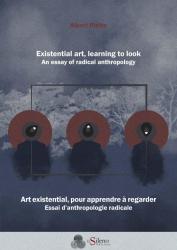
Existential Art, Learning to Look. An Essay of Radical Anthropology (bilingual version, english & french), Lago (Italy), II Sileno Edizioni, 2024 [ebook].
This book includes the English and French versions of a short text that shows how certain works of art can help us to conceive of an anthropology of the human being, by creating new topics, broadening perception and proposing concepts. The author moves from the reflections of Giacometti to the poetry of Pizarnik, from a drawing by Duchamp to Rilke's 'advice' to a young anthropologist. Looking, learning to look, is the common thread.
Downloadable : https://www.ilsileno.it/interdisciplinaryperspectives/volumes/monographic-volumes/
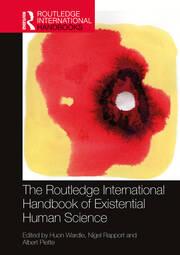
The Routledge International Handbook of Existential Human Science, edited by Huon Wardle, Nigel Rapport and Albert Piette, New York-London, Routledge, 2023.
This volume is the first handbook to explore existentialism as epistemology and method. Transdisciplinary in scope, it considers the nature of human subjectivity and how human experience ought to be studied, examining the connections that exist between the individual’s imagining of the world and their everyday practice within it. With attention to the question of whether humans are ultimately alone in their self-knowledge or whether what they know of themselves is constructed in common with others, it enables the reader to recognize core questions that frame the methods and orientation of an existential inquiry. In addition to historical exposition, it offers a variety of chapters from around the world that explore the diverse global spaces for, and different types of, existential focus and discussion, thus questioning the view that the existential "problem" may be singularly a matter for the post-enlightenment West. The fullest and most comprehensive survey to date of what human beings can and should make of themselves, The Routledge International Handbook of Existential Human Science will appeal to scholars across the humanities and social sciences with interests in anthropology, sociology, philosophy, and research methods.
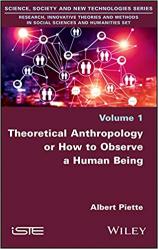
Theoretical Anthropology or How to Observe a Human Being, Hodoken-London, Wiley-Iste, 2019.
It may seem obvious that the human being has always been present in anthropology. This book, however, reveals that he has never really been a part of it. Theoretical Anthropology or How to Observe a Human Being establishes the foundations and conditions, both theoretical and methodological, which make it possible to consider the human being as a topic of observation and analysis, for himself as an entity, and not in the perspective of understanding social and cultural phenomena. In debate with both anthropologists and philosophers, this book describes and analyzes the human being as a “volume”. To this end, a specific lexicon is built around the notions of volume, volumography and volumology. These notions are further illustrated and enriched by several drawings.
More information: https://onlinelibrary.wiley.com/doi/book/10.1002/9781119618348
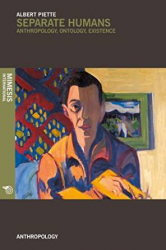
Separate Humans. Anthropography, Ontology, Existence, Milan, Mimesis International, 2016.
This book is a theoretical essay that lays foundations on which to build an anthropology directly focusing on human units. In the first chapter, the author attempts to show that the evolutionary specificity of humans constitutes an argument in favour of this perspective. The consciousness of existing in time and nuanced modalities of presence call for a detailed observation of humans. The second chapter is a critique of the abundant use of the notion of relations in social anthropology. This critique is necessary because of the extent to which the various theoretical and methodological uses of relations absorb and lose existences and their details. The third chapter concerns nonhumans, another major theme of contemporary anthropology. Albert Piette sees a certain debasement of the notion of existence and proposes a realist ontology, considering what does and does not exist, from the examples of divinities, animals and collective institutions. It is not a matter of being satisfied with an analysis of ontologies or local metaphysics, but also showing what really is in a situation, and not just from the point of view of people and their discourse. This analysis leads to a classification of beings and to a consideration of the importance of minimality in human existence.
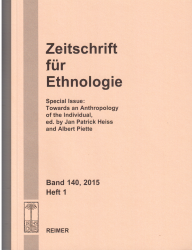
"Towards an Anthropology of the Individual", edited by Jan Patrick Heiss and Albert Piette,
Special Issue in Zeitschrift für Ethnologie, 140, 1, 2015.
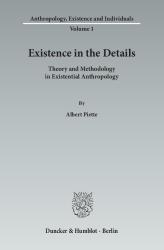
Existence in the Details. Theory and Methodology in Existential Anthropology, Berlin, Duncker & Humblot, 2015
This book is an anthropology book, not a social and cultural anthropology book, but an existential anthropology book. It presents a critique of the theories and methods of the social sciences, which Albert Piette reproaches for side-stepping human beings, their modes of being and more generally the fact of existing. The book also offers an original combination of methods for exploring the details of existence: the particularities of each person in a group, the succession of situations in a day, and the subtlety of moments of presence. It gives rise to new theoretical propositions on what constitutes the specificity of human existence and social life.
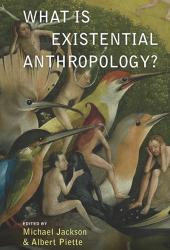
What is Existential Anthropology ?, New York-Oxford, Berghahn Books, 2015,
edited by Michael Jackson and Albert Piette
What is existential anthropology, and how would you define it? What has been gained by using existential perspectives in your fieldwork and writing? Editors Michael Jackson and Albert Piette each invited anthropologists on both sides of the Atlantic to address these questions and explore how various approaches to the human condition might be brought together on the levels of method and of theory. Both editors also bring their own perspective: while Jackson has drawn on phenomenology, deploying the concepts of intersubjectivity, lifeworld, experience, existential mobility, and event, Piette has drawn on Heidegger’s Dasein-analysis, and developed a phenomenographical method for the observation and description of human beings in their singularity and ever-changing situations.
More information : https://www.berghahnbooks.com/extras/docs/flyer/JacksonWhat_9781782386360.html
CHAPTERS AND PAPERS
- What is Anthropological Autography?, Anthropos, 120, 2025, pp. 561-573.
- Getting out of the Relation and into in an Anthropology of Existents, in F. Vandenberghe and C. Papilloud (eds), New Directions in Relational Sociology. Vol. 1: Relations all the way up, London, Palgrave, 2025, pp. 127-145.
- Volumographic reduction is not phenomenological reduction. Theory and drawings on the conditions for describing a human being (with C. Beaugrand), Grafia im linha. Arquivo de experimentaçoes do La'grima-Universidade Estadual de Campinas-Unicamp, 2025 (online: https://lagrima.space/volumographic-reduction-is-not-phenomenological-reduction/).
- Eleven Hours and Thirty-Eight Minutes: Extraction, Continuous Filming and Description (with C. Beaugrand), Visual Anthropology, june 2025 (online).
- Volume (with C. Beaugrand), in N. Rapport (ed.), Anthropology’s Philosophy: How Anthropology Makes Concepts its Own, London, Palgrave Macmillan, 2025, pp. 59-67.
- Back to the Substance: Interpreting Aristotle for a Radical Anthropology, Agathos: An International Review of the Humanities and Social Sciences, 15, 2 (29), 2024, pp. 17-33.
- The Being-Cylist: An Essay in Existential Anthropology, Argument, 14, 2024, pp. 107-120.
- Continuous Film, Sculpture, and Mime: a Triple Heuristic to Think the Singularity and Continuity of a Human Being (with C. Beaugrand), Culture-Kairos, june 2024 (online).
- Parmenides, Plato, Aristotle : Essay on the Foundations of an Existential Anthropology, Agathos : An International Review of the Humanities and Social Sciences, 15, 1 (28), 2024, pp. 7-22.
- To Lose or Not to Lose the Human Being, Dialoghi mediterranei, march 2024 (online).
- Pessoa, this Volume of Being: an Anthropological Experiment, Pessoa Plural. A Journal of Fernando Pessoa Studies, 24, 2023, pp. 1-16 (online).
- Detachment, Hesitation, Indifference: An Anthropology of the Religious Being, Studies in Religion, 2024 (online).
- Volumology as Existential Anthropology, in H. Wardle, N. Rapport and A. Piette (eds), The Routledge International Handbook of Existential Human Science, New York-London, Routledge, 2023, pp. 265-274.
- Introduction. Singularity and Continuity, in H. Wardle, N. Rapport and A. Piette (eds), The Routledge International Handbook of Existential Human Science, New York-London, Routledge, 2023, pp. 239-243.
- General Introduction (with H. Wardle and N. Rapport), in H. Wardle, N. Rapport and A. Piette (eds), The Routledge International Handbook of Existential Human Science, New York-London, Routledge, 2023, pp. 1-6.
- Singularity, Form, and Structure. When Metaphysics Helps in Describing a Volume of Being, State of Affairs / Stan Rzeczy, 22 (1), 2022, pp. 153-167.
- An Existential Manifesto Inspired by Alejandra Pizarnik : Autography, Absolute Style and the Anthropologist, Yearbook of the Centre for Cosmopolitan Studies, 5, 2021 (online).
- Following and Analyzing a Human Being. On the Continuity and Singularity of an Individual (with M. Kneubühler), in F. Cooren and F. Malbois (eds), Methodological and Ontological Principles of Observation and Analysis. Following and Analyzing Things and Beings in our Everyday World, New York, Routledge, 2019, pp. 13-43.
- Details of Detachment and Human Specificity. Lessons of Nonhuman Primates for the Anthropologist, in T. Breyer and T. Widlok (eds), The Situationality of Human-Animal Relations. Perspectives from Anthropology and Philosophy, Bielefeld, Transcript Publisher, 2018, pp. 69-82.
- Theoretical Principles of Anthropology as a Science of Human Beings, Yearbook of the Centre for Cosmopolitan Studies, 2017, 3 (online).
- The Minimality, Contradictions, and Origin of Indifference, Hau (Debates about ‘Anthropology and the study of contradictions’), 2016, 6 (1), pp. 18-22 (online).
- Hominist Manifesto: Anthropology, Utopia and Ethics (with G. Torterat), Journal of the Anthropological Society of Oxford, VIII, 2, 2016, pp. 230-250 (online).
- Individuals in Anthropology (with J.P. Heiss), Zeitschrift für Ethnologie, 140, 2015, pp. 5-18.
- Relations, Individuals and Presence. A Theoretical Essay, Zeitschrift für Ethnologie, 140, 2015, pp. 19-34.
- God and the Anthropologist. The Ontological Turn and Human-Oriented Anthropology, Tsantsa, 20, 2015, pp. 34-44.
- Anthropology and the Existential Turn (with M.D. Jackson), in M.D. Jackson and A. Piette (eds), What is Existential Anthropology?, New York-Oxford, Berghahn Books, 2015, pp. 1-29.
- Existence, Minimality and Believing, in M.D. Jackson and A. Piette (eds), What is Existential Anthropology ?, New York-Oxford, Berghahn Books, 2015, pp. 178-213.
- Existential Anthropology: what could it be ? An Interpretation of Heidegger, Argument. Biannual Philosophical Journal, Vol. 4,2, 2014, pp. 229-246.
- An Anthropology of Belief and a Theory of Homo Religiosus, Archives de sciences sociales des religions, 167, juillet-septembre 2014, pp. 277-294.
- To Be or Not To be in a Ritual: Essay about the Mitigated Presence, Studies on Theological Sciences of the Polish Academy of Science, 9, 2014, pp. 231-245
- Where Is the Theory in Visual Anthropology?, with P. Hockings, et al., Visual Anthropology, 27, 5, October-December 2014, pp. 436-456.
- The Visual Traces of an Ethnographic Investigation, Or How Do People Present Themselves in a Concrete Situation ?, Visual Anthropology, Vol. 23, 3, 2010, pp. 186-199.
- Epistemology and Practical Applications of Anthropological Photography, Visual Anthropology, vol. 6, 1993, pp. 157-170.
- Play, Reality and Fiction, Qualitative Sociology. Vol. 15 (1), Spring 1992, pp. 37-52.